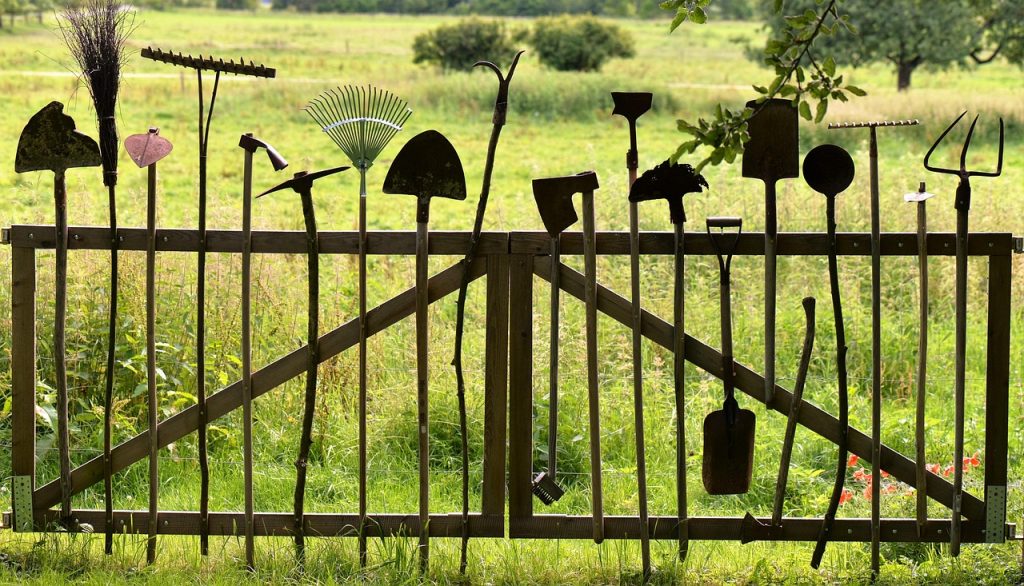Whether you’re just starting out with your allotment or you’ve been growing your own for years, having the right tools makes all the difference. Over time, I’ve found there are some bits of kit I simply can’t live without — tools that make digging, pruning, planting and harvesting so much easier and more enjoyable.

Here are my top 10 must-have tools for the allotment, tried and tested by many a muddy-handed afternoon:
1. Garden Fork
An absolute essential for breaking up compacted soil, turning over beds, and lifting crops like potatoes. Choose a sturdy fork with strong tines and a comfortable handle — your back will thank you.
2. Spade
Great for digging, edging beds, and shifting compost or manure. A spade with a sharp edge and a good grip makes slicing through soil much easier. Stainless steel blades are ideal for reducing sticking.
3. Secateurs
Perfect for pruning back plants, deadheading flowers, and trimming soft woody stems. A good pair of sharp secateurs is something you’ll reach for again and again throughout the growing season.
4. Dutch Hoe
Weeds beware! A Dutch hoe is one of the most effective tools for slicing through weeds just below the soil surface, especially when the ground is dry. It’s quick, efficient, and saves your back — perfect for keeping paths and beds tidy with minimal effort.
5. Rake
Ideal for levelling soil, spreading mulch or compost, and tidying up fallen leaves. I find it especially handy when preparing seed beds — a fine, even surface makes all the difference when sowing.
6. Trowel and Hand Fork
Your go-to tools for planting, transplanting, and general fiddly work around the beds. Lightweight but tough is what you want here — I keep mine tucked in a trug or tool belt at all times.
7. Loppers
For when secateurs just won’t cut it. Loppers are perfect for thicker branches and clearing brambles or overgrown areas at the back of the plot. They’ll save your wrists and give you serious cutting power.
8. Gardening Gloves
Don’t underestimate the value of a good pair of gloves. They protect your hands from thorns, nettles, rough edges, and the cold. I keep a couple of pairs handy — a tough pair for pruning and a lighter pair for planting.
9. Watering Can
Especially important if your allotment doesn’t have a hose connection. A sturdy watering can (ideally with a removable rose head) is essential for watering young plants and seedlings gently and precisely.
10. Wheelbarrow
From shifting compost to carting around tools or hauling a bumper harvest home, a wheelbarrow is the workhorse of any allotment. It’ll save your back and your energy on busy days.
Final Thoughts
Every allotment is different, and over time you’ll discover your own favourites. But with these ten tools in your shed or on your plot, you’re well-equipped for a productive growing season.
What are your must-have allotment tools? Let me know in the comments — I’m always keen to learn what works for fellow growers!

Leave a Reply